Planting a Rose Garden Tips: Easy Steps for Beautiful Blooms
Planting a rose garden can be a rewarding and enjoyable experience. Roses add beauty and fragrance to your garden, making it a delightful place to spend time. By learning a few key tips, you can ensure that your rose garden thrives and produces stunning blooms.
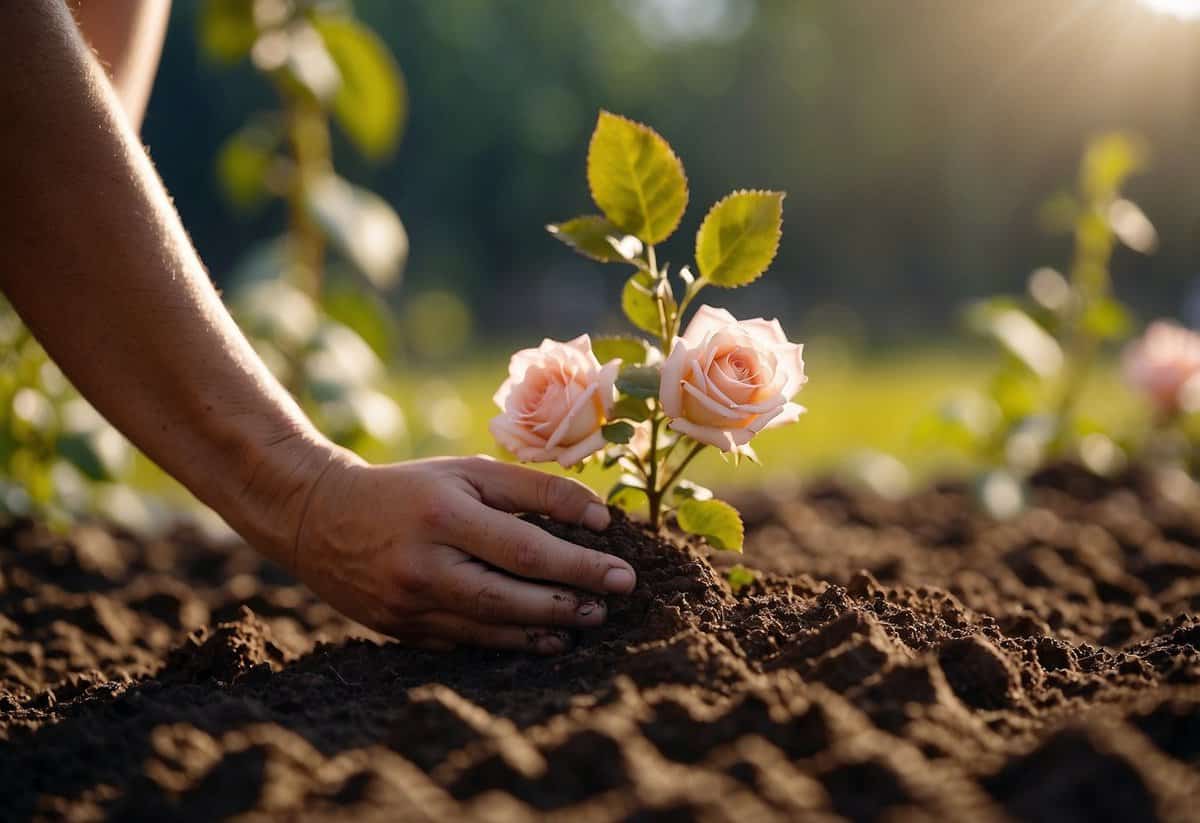
Whether you’re a beginner or experienced gardener, you can successfully grow roses with the right care. From picking the best spot to understanding basic maintenance, creating a flourishing rose garden is within your reach.
1) Choose a Sunny Spot
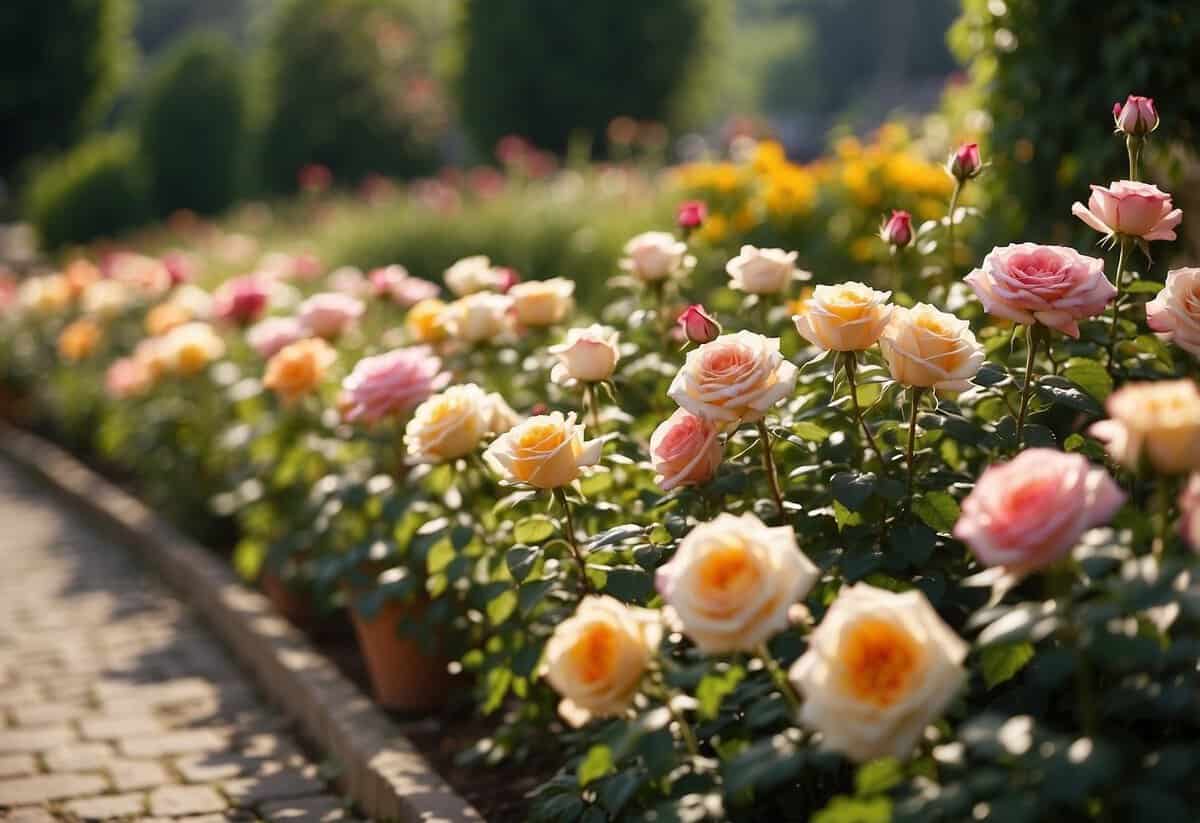
Roses love sunlight. Pick a spot in your garden that gets at least 6 to 8 hours of direct sun every day. This helps the roses grow strong and healthy.
Make sure the spot has good air circulation too. This helps prevent diseases. Avoid planting roses close to big trees or bushes that might block the sunlight or air.
2) Prepare the soil

Start by loosening the soil where you want to plant your roses. Use a spade or a garden fork to turn the soil. This will make it easier for the roots to grow.
Add some organic matter like compost or manure to your soil. This helps improve fertility. Aim for 2-4 inches of organic material each year.
Consider mixing in some essential nutrients. For instance, adding alfalfa meal can provide nitrogen, phosphorus, and potassium. Kelp meal is also great as it releases potassium slowly and provides many trace minerals.
Roses thrive when their soil is well-prepared!
3) Select rose varieties

Choose roses that suit your garden’s climate and space. Different types of roses have specific needs and characteristics.
Floribunda roses bloom in clusters and are great for adding vibrant color. Hybrid tea roses are known for their large, single blooms.
For a classic look, try climbing roses. They can grow up archways or fences, creating a stunning effect in your garden.
If you prefer something low maintenance, consider shrub roses. They are hardy and often resist diseases.
Check local nurseries for native roses, which are well adapted to your area.
4) Space your roses properly

When planting your rose garden, give each rose enough room to thrive. Different types of roses need different spacing.
For example, Hybrid Tea roses should be planted about two feet apart.
Larger shrub roses might need more space. Also, make sure your roses have good airflow to prevent diseases. Proper spacing helps your garden stay healthy and beautiful.
5) Water Deeply and Regularly
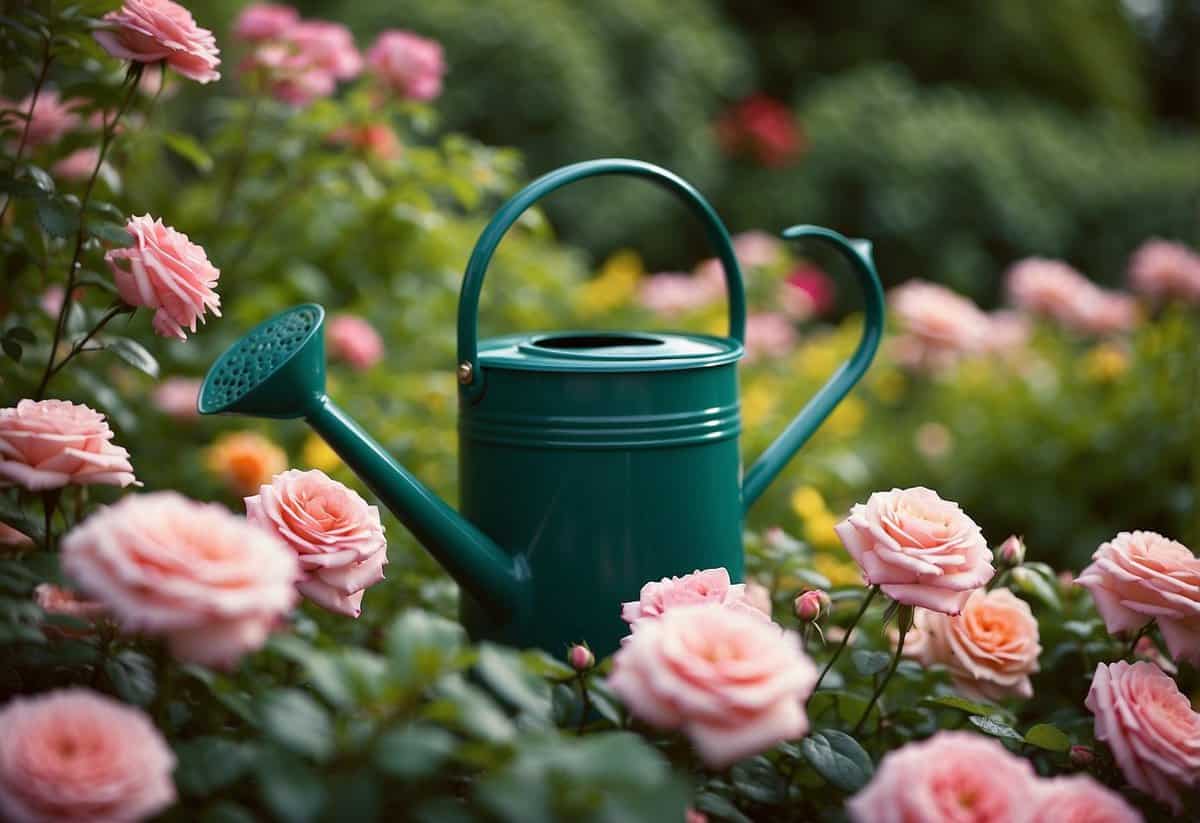
Watering your roses deep and regular is key. It’s important to water around the base, not the foliage. This helps prevent fungal diseases.
Newly planted roses need about 3 to 5 gallons per week. Established roses do well with 1 inch of water a week, given less frequently but deeply.
Using a watering can or a watering wand is effective. This encourages roots to grow deep, making your roses stronger and more resilient.
6) Mulch to Retain Moisture

Mulching helps keep your rose garden hydrated. Using materials like wood chips, bark, or pine needles can maintain soil moisture.
It’s important to spread mulch in a layer about 2-4 inches deep. Keep the mulch at least 2 inches away from the stems to avoid disease.
Water the mulch regularly, especially during dry weather, to ensure it keeps the soil moist.
7) Prune for Better Blooms

Pruning your roses helps them grow better and bloom more. Start by removing any dead or diseased branches. This keeps your plants healthy.
Cut back any crossed branches that block sunlight. Aim for an open shape. This allows air and light to reach all parts of the plant.
Trim 1/4 inch above an outward-facing bud. Use a 45-degree cut to let water run off. This prevents rot and helps your roses bloom more beautifully. For more details on pruning techniques, check out these tips.
8) Fertilize Monthly
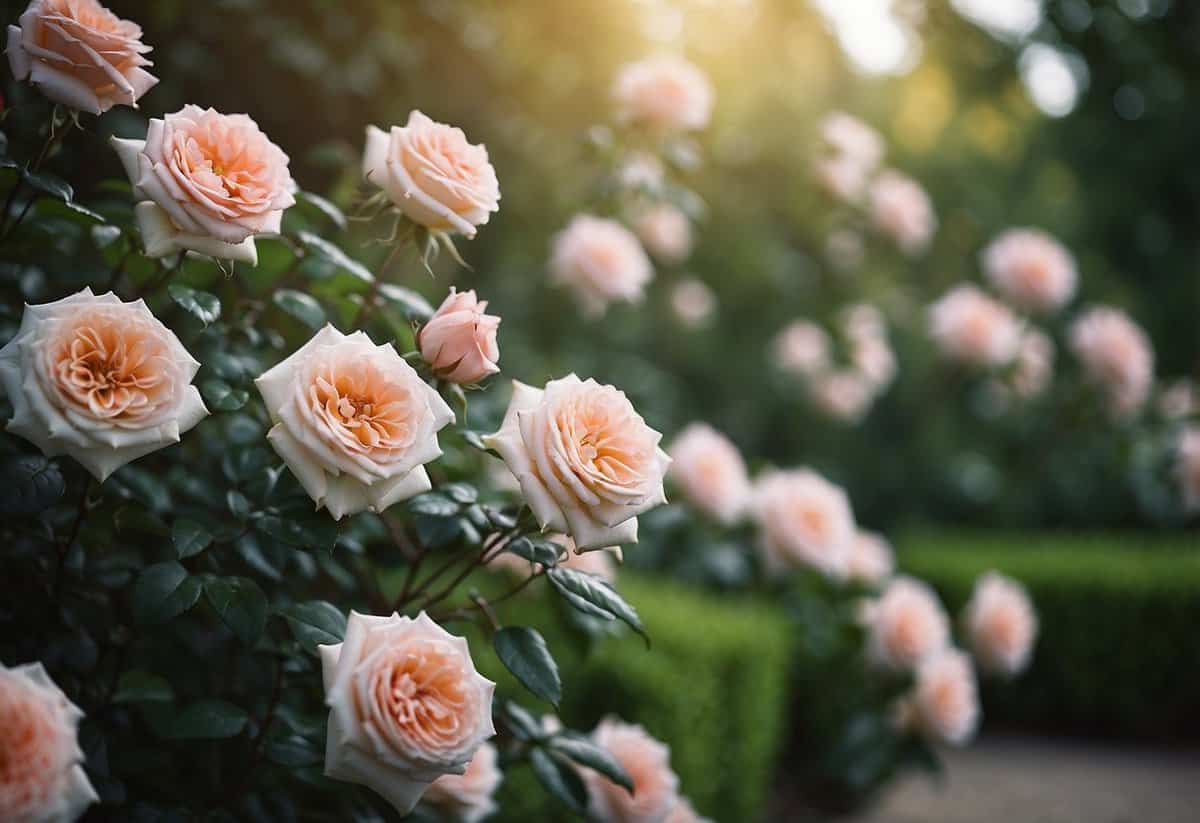
To keep your roses healthy and blooming, fertilizing them monthly is key. Use a balanced fertilizer or one slightly richer in potassium.
Sprinkle 1/4 to 1/2 cup of Epsom salts around the base of the plant to promote growth and cane development.
Apply your chosen fertilizer every 3 to 4 weeks and adjust based on the fertilizer’s instructions for best results. For more detailed guidance, check out this guide.
9) Watch for Pests and Diseases

Keep an eye out for common pests like spider mites and aphids. These tiny bugs can damage your roses by sucking out the plant’s nutrients. You may notice yellow spots on the leaves or sticky residue.
Diseases such as botrytis blight and black spot can also affect your roses. Watch for soft, tan blotches on petals and black spots on leaves. Regularly inspect your roses and address these issues quickly to keep your garden healthy.
Learn more about these problems at Epic Gardening and Florgeous.
10) Deadhead Spent Flowers

Deadheading roses helps them bloom more. When you remove the old flowers, the plant uses its energy to create new blooms instead of seeds.
To deadhead, use sharp, clean pruning shears. Cut the stem just above a set of healthy leaves at a 45-degree angle. This will help new growth sprout from the cut area.
Always clear away any dropped plant material. Leaving it on the ground can attract pests and diseases. For more detailed tips, visit Garden Design.
Choosing the Right Rose Varieties

Selecting the right roses for your garden is essential to ensure they thrive and add beauty to your space. Understanding different types of roses and choosing those suited to your climate are vital steps.
Understanding Different Rose Types
Roses come in many types, each with unique features. Hybrid teas are popular for their high-centered blossoms and long stems, ideal for cutting. Floribundas bloom in clusters, providing more flowers. Grandifloras combine features of hybrid teas and floribundas, offering large blooms and abundant flowers.
Shrub roses are hardy and low-maintenance, perfect for hedges or garden beds. Climbing roses can be trained on trellises or fences, offering vertical interest. Miniature roses are small but perfect for containers or small spaces.
Consider what you want from your roses. For example, if you want to create beautiful bouquets, hybrid teas are a great choice. If you prefer something robust and easy to care for, shrub roses might be better.
Selecting Roses for Your Climate
Different roses thrive in different climates. If you live in a cooler region, look for varieties that can withstand frost, like the Rugosa rose, known for its hardiness. In warmer climates, roses like the China rose are better suited because they can handle heat.
Check with local nurseries, as they often carry roses that perform well in your area. Local varieties, like the Rosa foliolosa in the Western U.S., adapt better to regional conditions. Avoid invasive non-native roses, which can harm local plant life.
Also, consider disease resistance. Some roses are more prone to problems like black spot or powdery mildew, which can be prevalent in humid areas. Look for varieties labeled as disease-resistant to save yourself trouble down the road.
Preparing the Soil
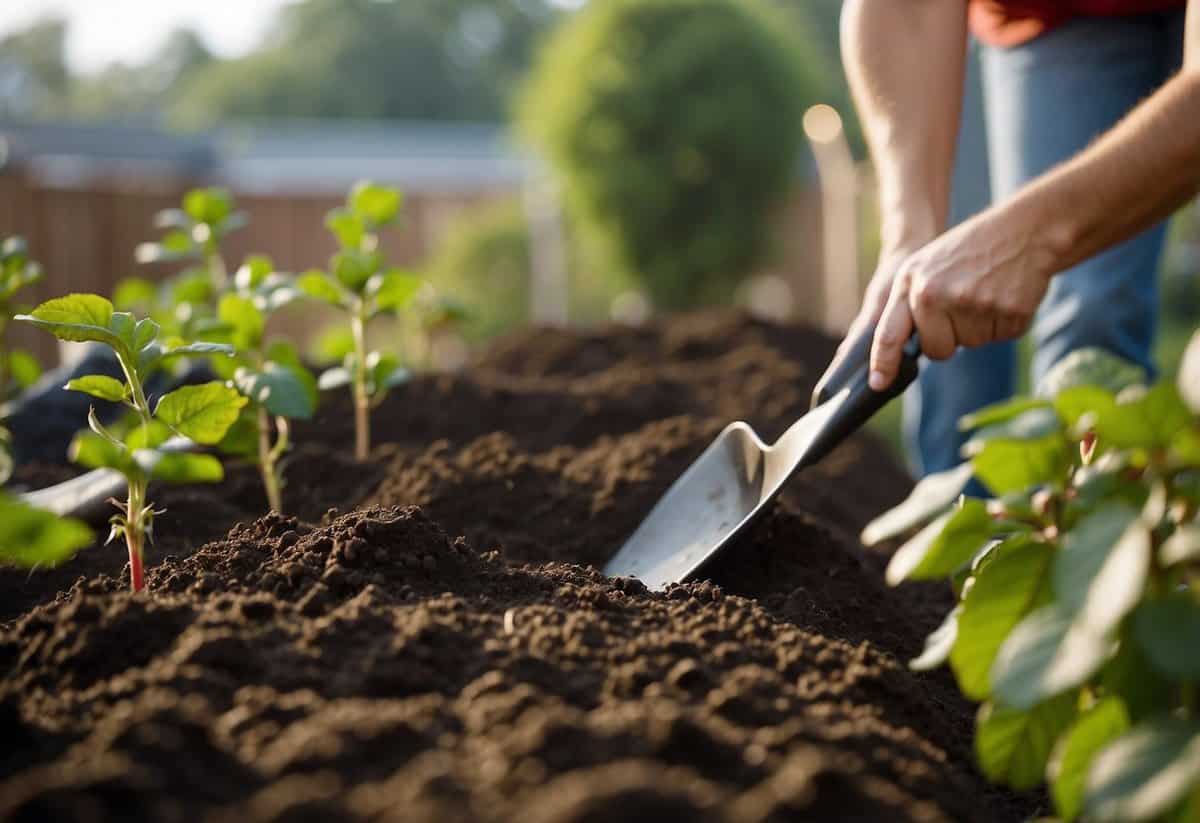
Getting the soil ready for your rose garden is crucial. You’ll need to test the soil and make the right amendments to create a fertile environment. Additionally, ensuring your soil drains well is essential to prevent waterlogging.
Soil Testing and Amendments
Start with a soil test to know its pH and nutrient levels. Roses prefer slightly acidic soil with a pH of 6.0 to 6.5. You can buy test kits online or at garden stores. If the pH is too high, add sulfur. If it’s too low, lime will help.
Amending the soil with organic matter like compost or manure enriches it. Mix in 2-4 inches of organic material. This boosts soil fertility and improves structure. Essential nutrients like nitrogen, phosphorus, and potassium are also important. You can add a balanced fertilizer to meet these needs.
Proper Soil Drainage
Roses need well-draining soil to keep their roots healthy. Heavy, clay soils hold too much water and can cause root rot. Sandy soils drain too quickly and don’t hold nutrients. Loamy soil is the best.
To improve drainage, mix in coarse sand or perlite with the soil. Raised beds or mounds can also help. Digging in organic matter like compost improves both drainage and nutrient content. Ensure your garden area is slightly sloped to prevent water from pooling around the plants.
For container-grown roses, use pots with drainage holes. Place a layer of gravel at the bottom of the pot to help water escape.
Planting Your Roses

To get the best blooms, plant your roses at the right time and place them correctly. This ensures they receive the nutrients, sunlight, and space needed to thrive.
Optimal Planting Time
The best time to plant roses is in the spring or fall when temperatures are mild. Spring planting allows the roots to establish before the summer heat. Fall planting gives roots a chance to grow before winter.
Watch for frost dates in your area. Plant after the last spring frost or at least six weeks before the first fall frost. Too soon, and frost can damage young plants; too late, and they may not establish well before winter.
Bare-root roses need planting earlier in the season. Soak them in water for a few hours before planting. Container-grown roses are more flexible and can be planted later but still avoid extreme heat or cold.
Correct Spacing and Depth
Proper spacing is critical for healthy growth and disease prevention. Roses need space for air circulation to reduce the risk of diseases like black spot and mildew. A good rule is to space standard roses about 2 to 3 feet apart. Larger varieties may need up to 5 feet.
Dig a hole deep enough to accommodate the roots without bending them. Usually, this means a depth of about 15-18 inches. The width should be wide enough to spread the roots out comfortably, roughly twice the width of the root ball.
Place bare-root roses so the bud union (the swollen area where the stems meet) is at ground level in warm climates or 1-2 inches below ground in cooler areas. For container-grown roses, ensure the soil level in the pot matches the ground level.
Mulch around the base to keep moisture in and discourage weeds. Avoid piling mulch against the stems as this can cause rot.
Maintaining Your Rose Garden

To keep your rose garden healthy and blooming, you need to focus on proper watering techniques and regular pruning and deadheading. These important steps help ensure vibrant flowers and healthy plants.
Watering Techniques
Roses need consistent watering, especially during dry spells. Aim to water deeply to keep the soil evenly moist but not waterlogged.
A good rule of thumb is to water your roses about once a week, giving them around 1 to 2 inches of water. In hotter climates, you might need to increase this to twice a week.
Early morning is the best time to water your roses. This allows the plants to dry off during the day, reducing the risk of fungal diseases like powdery mildew. Use drip irrigation or a soaker hose to deliver water directly to the roots, avoiding wetting the foliage.
Key points:
- Water deeply once or twice a week.
- Water in the early morning.
- Avoid wetting the foliage.
Pruning and Deadheading
Pruning roses helps shape the plant, encourages new growth, and removes dead or weak stems. The best time to prune is in early spring, just as new growth begins.
Use clean, sharp pruners to make clean cuts. Remove any dead or damaged wood first, then focus on shaping the plant. Cut about 1/4 inch above a healthy outward-facing bud.
Deadheading, or removing spent flowers, promotes continuous blooming. To deadhead, cut the stem below the faded flower down to the first set of five leaves. This keeps the plant looking tidy and encourages new buds to form.
Key points:
- Prune in early spring.
- Use sharp, clean pruners.
- Remove dead flowers to promote new blooms.







